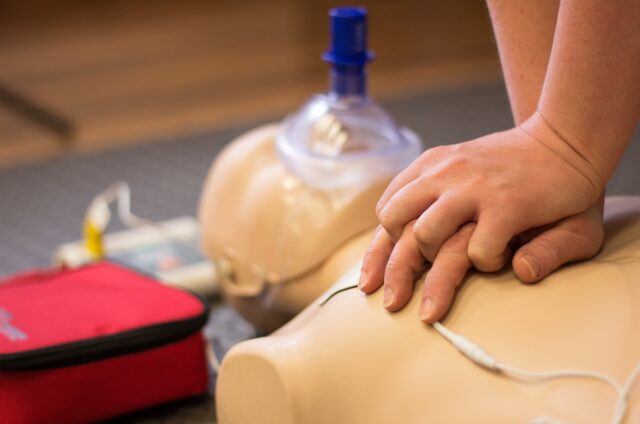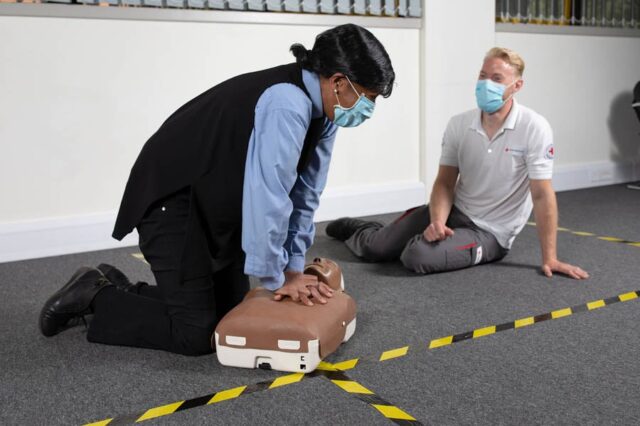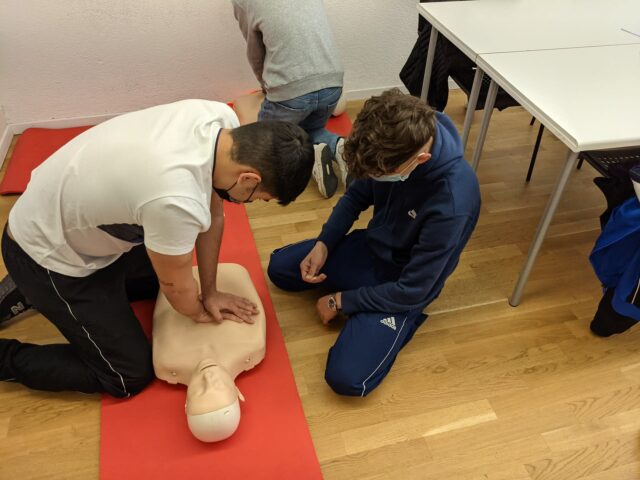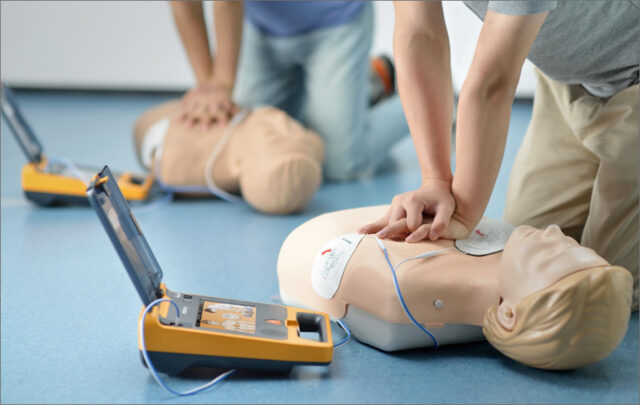
In an unexpected moment of crisis, every second counts. The ability to respond quickly and effectively to a sudden medical emergency can mean the difference between life and death. Whether in the workplace or any public environment, basic lifesaving skills such as cardiopulmonary resuscitation (CPR) and first aid are invaluable.
This article delves into the essential subject of empowering your workforce with these vital abilities. We will explore why this training is crucial, how to select the proper program and the key skills every employee should have, among other vital topics.
The Importance of CPR and First Aid Training

Life’s unpredictability demands preparedness for sudden, life-threatening situations. Trained personnel with the ability to perform CPR and administer basic first aid can transform a hopeless scenario into a story of survival.
Immediate and appropriate response can significantly improve the chances of recovery from sudden cardiac arrest or other emergencies. Every year, these skills save countless lives, reinforcing the necessity for comprehensive training in workplaces. To properly equip your workforce with knowledge, check out https://cprcertificationnow.com/pages/group-discounts.
Equipping employees with these lifesaving abilities not only saves lives but fosters a culture of care and responsibility. Knowledge of CPR and first aid instills a sense of self-assurance in individuals, making them proactive participants in their community.
This empowerment results in a safer, more responsive environment, potentially alleviating the impact of health-related emergencies, both in the workplace and beyond.
Understanding Workplace Emergency Preparedness

Emergency preparedness in the workplace isn’t merely a matter of policy but is intrinsic to an organization’s success and well-being.
Effective readiness necessitates the creation of comprehensive plans tailored to various possible scenarios, from sudden illness to serious accidents. Employees trained in CPR and first aid can act promptly, minimizing potential harm and even preventing fatalities.
The concept of preparedness extends far beyond mere reaction to a critical situation. It encompasses a mindset and culture that prioritizes safety and emphasizes continuous learning and adaptation.
Providing staff with the necessary training and resources contributes to a resilient organizational structure that is equipped to face emergencies with confidence and competence.
Selecting the Right CPR and First Aid Training Program

Choosing a suitable training program involves considering numerous factors. Recognize your workforce’s specific needs, the industry you operate in, and the most relevant potential emergencies.
Once assessed, align these needs with a recognized, accredited training provider offering a curriculum that addresses the unique requirements of your organization.
The decision must be strategic, focusing on the program’s quality and the credibility of the instructors. Investigate their qualifications, experience, and the flexibility of their training schedules.
A well-chosen program will empower your employees with the correct knowledge, skills, and confidence, transforming them from unprepared bystanders to equipped responders in emergencies.
Essential First Aid Skills for Employees

Beyond CPR, employees must possess a collection of essential first-aid skills. Immediate care for wounds, burns, fractures, and other common injuries can prevent further complications or even save a life.
Educating your staff in these procedures allows them to act with precision and calm in times of need, reducing the anxiety often associated with emergencies.
Cultivating such skills goes hand in hand with creating a nurturing environment. A well-prepared employee not only contributes to a safer workplace but also fosters a sense of unity and trust.
Offering training in these critical areas demonstrates an employer’s commitment to the welfare of their workforce, enhancing overall well-being and morale.
Learning and Practicing CPR Techniques

CPR, or the revival of heart and lung function, requires precision, calm, and practice. A training program must include not only theoretical knowledge but hands-on experience.
Working with dummies and other practical tools ensures that the student’s understanding translates into tangible skills, ready to be applied when needed.
Continuous practice is equally vital. CPR techniques may not be needed frequently, but when they are, they must be executed flawlessly. Regular refresher courses and practice sessions can maintain and enhance these skills.
Employees then remain current, confident, and ready to provide vital assistance during a cardiac or respiratory emergency.
Recognizing and Responding to Common Emergencies

Awareness of common emergencies and the right response is paramount. Recognizing signs of choking, stroke, heart attack, or an allergic reaction allows for immediate and accurate intervention.
Training employees to detect and respond to these scenarios is critical in mitigating damage and initiating prompt medical help.
Reacting appropriately requires not only identification but the right skills and tools. Incorporating scenario-based learning in your training helps employees think and act quickly.
This active engagement simulates real-world experiences, preparing your team to handle actual emergencies with the knowledge and composure they need.
Building Confidence in Emergency Situations

Handling an emergency is often more about confidence than merely having the required skills. While proper training provides the necessary tools, building assurance that one can perform under pressure is equally vital.
Simulated exercises and repetitive practice can help grow this confidence, ensuring that employees don’t freeze during an actual emergency.
Confidence comes from understanding that mistakes are part of the learning curve. Creating a supportive learning environment where errors are seen as opportunities to learn fosters growth.
The goal is to make the workforce feel confident and competent, ready to face emergencies with resilience and resolution, and not anxiety.
Integrating AED (Automated External Defibrillator) Training

In instances of sudden cardiac arrest, the integration of an AED can be a lifesaving measure. This device analyzes the heart’s rhythm and, if necessary, delivers an electric shock to restore normal rhythm.
AEDs are becoming increasingly common, and understanding how to operate one should be an integral part of emergency training.
Instruction in AED usage must be hands-on and comprehensive. It’s not merely about how to use the device but when to use it. Decision-making under stress is enhanced by rigorous, realistic practice.
With proper training, employees can act with precision, using an AED effectively, if the need arises, maximizing the chances of survival.
Final Thoughts

Our world, filled with uncertainties and unexpected events, necessitates a prepared and capable workforce. The empowerment derived from CPR and first aid training goes beyond mere compliance with regulations.
It’s about creating a culture of responsiveness, empathy, and readiness. From selecting the appropriate training program to the cultivation of vital skills and confidence, this article has traversed the essential terrains of emergency preparedness.
In considering your options for training in CPR and first aid, it’s essential to assess whether online certification aligns with your needs and preferences.
It offers a blueprint for creating workplaces and communities that are not only safer but compassionate and resilient. The well-trained, well-prepared workforce stands as a beacon of hope in times of crisis, a testament to what we can achieve when we invest in the skills that make us human.












